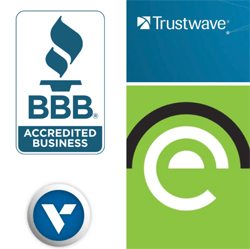This article was featured on Website Magazine on July 20, 2017. You can read the full article here.
When seeking to transform visitors into customers, most Internet entrepreneurs understand that conversion rates apply. Converting casual visitors into dedicated customers is tricky business; today, e-commerce entrepreneurs typically count on between a one- and two-percent conversion rate—if they’re lucky.
Getting visitors to take action in today’s inundated cyber realm takes foresight and creativity, but you don’t need to hire an expert to enhance your site’s conversion potential. Read on for practical ways to boost a finicky conversion rate.
Set Your Brand Apart
The single most common mistake e-commerce entrepreneurs make is blandness. Without that special spark, no company can survive in today’s competitive online marketplace. What sets your brand apart from the rest? What does your team offer that no other group can? What deliverables can you promise? What makes you unique? Take the time to answer that question, and then create messaging that can be uniformly applied to your website and related content. Simple, direct mission statements pack a punch; wordy terminology is much less effective. When it comes to visitor conversion, don’t overlook the power of an unforgettable key phrase to boldly sum a product up.
Create a Circle of Trust
Today’s online shopper is skilled in the art of Internet purchasing: She knows to look for security measures and legitimacy the moment she views a site’s Google listing and on the site. She’s got an eye out for shipping discounts, live chat options, accessible contact information and maybe even coupon codes. The discerning gaze of today’s savvy shopper daunts some entrepreneurs, but the cleverest salespeople know to embrace modern technology. Security measures and shopping “tools” abound, and when the customer’s experience sits at the forefront, it makes sense to enhance the site’s usability, efficiency, and even beauty.

Lock it Down
Before taking any aesthetic measures toward improving a site, focus first on customer safety. Invest in a sophisticated platform for your site that ensures security, and avoid open-source platforms, which tend to be more accessible to hacker invasions.
Employ Secure Sockets Layer (SSL) authentication to ensure data encryption, and consider taking more advanced measures if your customers’ interactions are particularly sensitive. An Extended Validation Secure Sockets Layer (SSL) can assure customers that their transactions are secured—and that the e-commerce site they’re engaging with values their safety first and foremost. And if you’re requesting a login from returning customers, demand high-quality passwords.
Provide secure tracking numbers for all orders, as well as easy follow-up contact information in the event of a problem. Would-be customers are much more likely to take action if they sense that each step of the shopping experience is wholly secure.
Make Shopping a Breeze
Second to security, shopper pleasure should be one of your focal points as you enhance your e-commerce site to boost conversion rates. Aim for a pleasing aesthetic experience for your customer—one devoid of clutter, unnecessary copy and clunky imagery. Keep photographs and videos tasteful but prominent—humans are, after all, a highly visual species. Pair imagery with bold, effective content and don’t overburden your viewer with too many words. Instead, arrange information where it makes sense for the customer—place “Add to Cart” and “Checkout” buttons prominently, where their proximity to products is intuitive.
Finally, consider offering shipping discounts or even free shipping to your clientele. Entrepreneurs around the globe complain of abandoned carts at the moment of checkout—something that can often be attributed to minor “sticker shock” the customer experiences upon viewing the shipping cost. Don’t shock your would-be customer; instead, list shipping costs upfront, or bundle shipping costs into the product’s price so you can boast free shipping and returns.
Invest in Quality
Empower your website with excellent imagery, video and written copy; skimping on shoddy content sells any product short, and will deter would-be customers before they even get a chance to peruse.
Instead, invest in high-quality design or seek out a strong content writer, both of whom will produce professional-grade content that will elicit trust from a would-be client. Shell out for excellent images of your products, and pair them with cohesive, easy-to-read descriptions. Invest in an editor who can hone your testimonials, ‘About Us’ page and your company’s bios.

Today’s e-commerce clientele is smart and discerning, and these shoppers know a high-quality site when they see one. Make it impossible for your viewer to navigate away; aim to create compelling content that demands a second look.
Create a Checkout They Can Sail Through
Don’t lose sales because of shoddy checkout software; invest in a sleek, efficient platform that makes it easy for shoppers to get what they need and get out! No one wants to spend time laboring at checkout, and lots of entrepreneurs see carts abandoned at this stage. Consider enabling multiple checkout options, like “Returning Customer” and “Guest.” That way, those who have done business with you before can save time, view past purchases, check tracking numbers, and even earn rewards. Set up easy-to-fill forms that make entering contact information and account numbers a breeze. Finally, accept multiple forms of payment, if you can—some consumers swear by PayPal, while others prefer to use their trusty debit cards. Make it easy for anyone to pay.
Don’t Let Them Go
Making sure a customer feels appreciated goes along way. “Remember” those who’ve browsed your site by investing in abandonment shopping cart software, which can help you to gently reach customers who navigate away from full carts without making purchases. Coupon codes are another great way to lure visitors into making a sale; create codes based on seasonal sales or hot new promos, then display them prominently on any homepage to facilitate impromptu sales. Setting up the option for a “Wish List” adds a personalized touch to any viewer’s experience—and sends the signal that an immediate purchase isn’t necessary.
As you tweak your site, look beyond the bottom line to optimize the customer’s shopping experience. An easy-to-navigate website enhanced by striking imagery and bold messaging is your ticket to converting views to sales.
